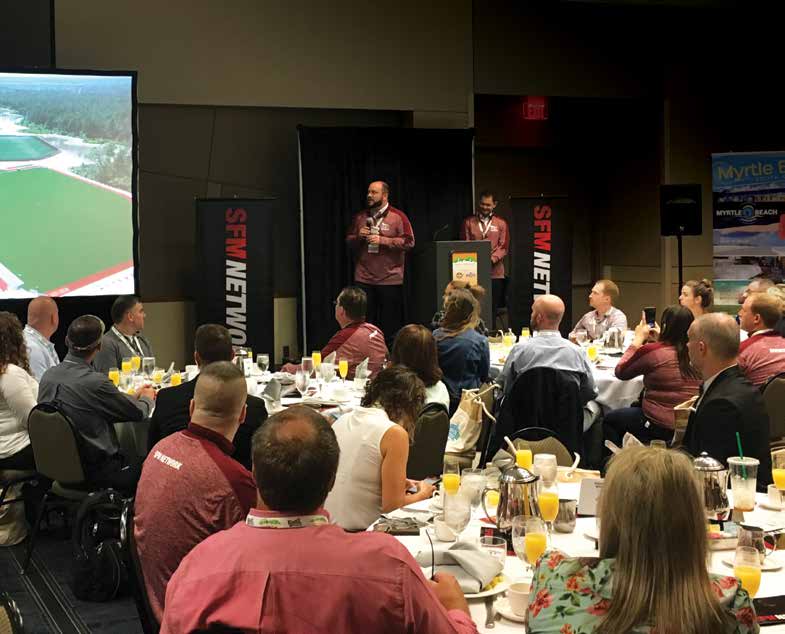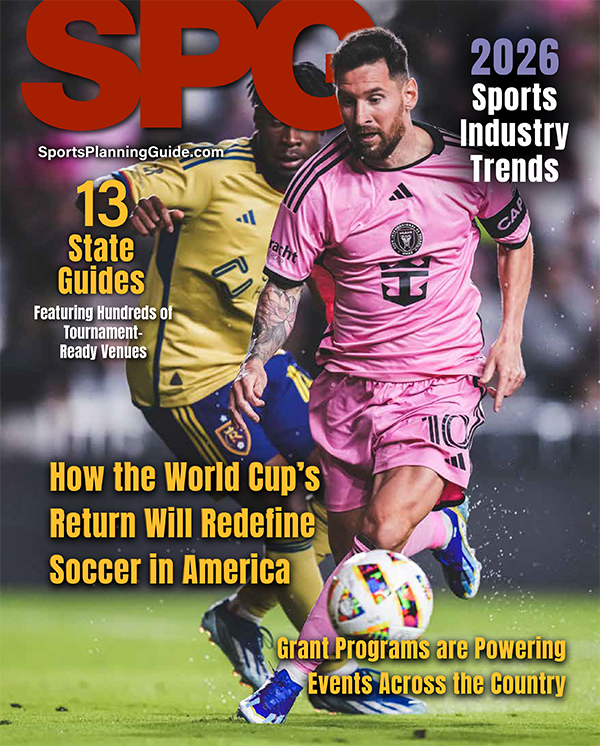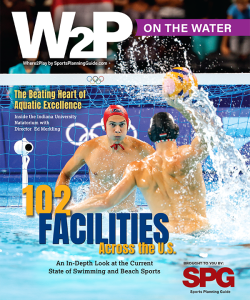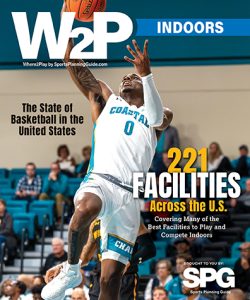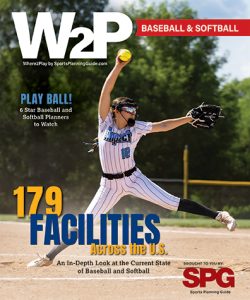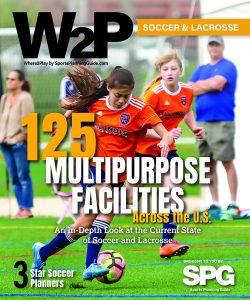The Sports ETA is expanding its role to maximize the symbiotic relationships between sports facilities and destinations as facilities to grow and become community assets.
By Jim Rice
It originally started with a conversation between Al Kidd and Mike Millay, not long after Kidd joined the National Association of Sports Commissions (now Sports ETA). The two had known each other for a number of years and started a broad conversation where Kidd hoped to take the organization in the future by creating new sustainable revenue, services and member categories.
“We were looking at ways to develop the organization in a way that was more robust,” said Kidd. One topic that kept resurfacing was a stronger focus on sports facilities. It was the result of those conversations that launched a feasibility study about a facilities component inside the organization. Millay had done a strategic session with the board before Kidd came onboard and one of the first things out of the block was that the sports commission space had expanded in a variety of different ways and everything pointed toward facilities. “As facilities were growing there was a greater need for insights, shared learnings and market research that really wasn’t out there,” said Millay. The lack of education is where Al Kidd’s vision and Mike Millay’s experience as the director of sports development for ESPN’s Wide World of Sports came into play.
Intersection of Sports Commissions and Facilities
There’s what one would call a symbiotic relationship between destinations and facilities. Destinations market facilities in an effort to bring events into the destination, increasing tourism revenue and resident interest and value around sports. However, as more new facilities come on board they are actively marketing and selling on their own. It’s a natural evolution of the industry, and while the Sport Commission or CVB sports sales team helps fill the building, it’s not their sole mission. Sports ETA sees its role evolving to fill a void with new resources for facility operators, large and small, as it relates to sports tourism.
“Over the next couple of years, we would like to develop a membership based trade association of sports facilities where we provide the same kind of resources we do for Sports ETA in the form of education, advocacy, resources and networking,” said Kidd.
Millay added, “We realize the interdependency of rights holders and the events they have their hands on. There’s the selection of destinations, securing vendors, sponsors and all that that revolves around event operations. Sports ETA has become a thought leader in all things sports tourism, whether it’s the events space or what Sports Commissions and DMO’s are doing to drive incremental value to their communities. The facilities segment opens up a lot more opportunities to leverage the professional development of Sports ETA, and reach into different segments within that ecosystem.”
This is the idea behind the facility undertaking. The organization hopes to embed new business tools into what has traditionally been a community-based industry. Whether it’s publicly owned, a P3 (public, private partnership) or a for-profit enterprise, there’s an increased emphasis on the financial outcome of the business. For example, a Parks & Rec department has been underwritten by a subsidy in some way, shape or form by a community. As these facilities are becoming bigger and more costly to operate, the organization hopes to assist them by applying a businesslike approach through professional development and tapping into the sports tourism industry.
“When it’s all said and done, if you’re a facility and you don’t have a sales mentality you will struggle because there’s too much competition coming,” Kidd continued. “You’re going to have to understand programming, development and sales. Secondary, if you don’t know how to operate it effectively and efficiently, you’re going to go out of business or you’re going to be sucking your community dry for resources that could be better spent elsewhere.”
Oversaturation Fears?
While much has been made about the frantic pace of new facility development around the country, Sports ETA aims to quash concerns that the industry is at a tipping point. “I’ll tell you while traveling around the United States, and I’ve traveled extensively around to markets, I have yet to find a market that is oversaturated with recreational facilities, and the communities are always crying for more space,” says Kidd.
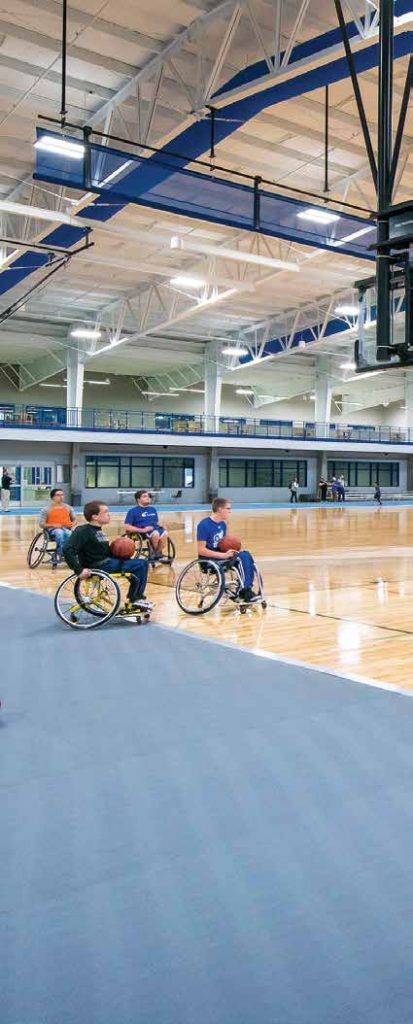 Sports ETA aims to provide resources to facilities of all shapes and sizes, whether that be a gym or 15 field sports complex, they feel operators can benefit from professional development. In some cases, the duo admits that tourism may not be an important factor to the facility, so focus is going to be on educating, building resources and development around helping them improve their abilities. At the same time, programming will be utilized to help make facilities more tourism-friendly.
Sports ETA aims to provide resources to facilities of all shapes and sizes, whether that be a gym or 15 field sports complex, they feel operators can benefit from professional development. In some cases, the duo admits that tourism may not be an important factor to the facility, so focus is going to be on educating, building resources and development around helping them improve their abilities. At the same time, programming will be utilized to help make facilities more tourism-friendly.
“We think a well-run building that hosts a lot of events impacts the community from a tourism standpoint. When people come into the community for a sports event, they deposit their dollars in hotels, restaurants, shops and gas stations. The facility becomes a community asset versus a line on the P/L,” said Kidd. That is kind of the long-term view of what we hope to accomplish – build the community asset around positive public sentiment which is partially delivered by the events they hold.”
Sports ETA is in the midst of creating resources around facilities and the organization has made significant progress. Some of this revolves around a virtual facility summit, in lieu of the organization’s cancelled symposium, which was set for April. After a successful inaugural facilities symposium in Knoxville in 2019, plans are in the works to launch an educational certification program for facilities which includes wide-ranging, procedural, sales, and operational content.
At the same time, Sports ETA seeks to build partnerships that they can provide facilities that will be beneficial, both in terms of knowledge-based data and possibly financial considerations that will be advantageous. “We believe that we will have a tract with multiple educational offerings during symposium around facilities that will begin to work toward that new certification program. We are expecting a larger attendance than the 72 that we had last year” said Millay, who heads up the working committee.
Also in the works are regional meetings where facility operators can network and learn from experts in their own backyard. “It opens up a lot more of the local guys who can show up who never go to conferences,” said Millay. “I think the wonderful thing here is that if you take any major metropolitan area, there are more facilities than there are Sports Commissions. I foresee a day at SportETA you might have five facilities, the DMO and the Sports Commission all there representing a community. I think there is a sense of unifying a community.”
Road Atlas
While there’s no imminent announcement of a new association, Sports ETA plans to get the second event under its belt and finish some of the planning toward the new segment. “We’ve got a road atlas constructed right now of where we want to take this. We are in the midst of starting to fill in some of the gaps around what kind of educational programming is needed, so we’re not far away. I would anticipate during 2020 that we may make a stronger announcement, but everybody on our board and executive leadership understands this opportunity and we want to jump in with both feet. We feel it meets the needs of the community for a variety of reasons,” said Kidd.

